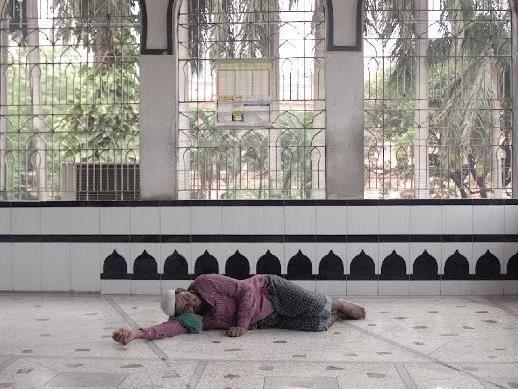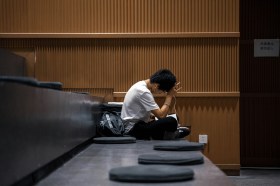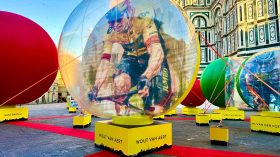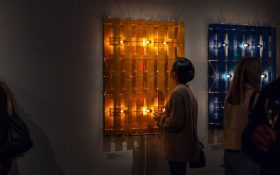Image: Locus II (still), 2014 by Omar Chowdhury.
Since moving to Australia from Bangladesh at the age of six, the artist now divides his time between Dhaka and Sydney.
Chowdhury, 31, spent the last two years navigating the urban and rural landscape of Bangladesh, where faith runs deep, to examine and experience spiritual practice.
He is preparing to display his latest collection of work, titled Ways, which includes artworks commissioned by the 4A Centre for Contemporary Asian Art in Sydney. It will be the first exhibition in the centre from Bangladesh.
‘We are very pleased to be presenting these new works by Chowdhury, an exciting emerging Australian artist with a very unique practice and background, working in this region of South Asia,’ 4A Director Aaron Seeto said.
The artist says he is looking at spiritual practice on a number of different levels.
‘The second section is about festival and kinetic connections of people, both Hindu and Shi’a Muslim,’ he said.
Compared to his previous projects, Ways is larger in scope – consisting of nearly seven hours of cinematic moving images in four works.
Locus I, II, is nearly three hours long and depicts religious rituals inside a Hindu temple and a Muslim mosque within the ancient city of Old Dhaka.
Chowdhury currently considers himself either atheist or agnostic, since departing from Islam when he was 19. He says that not identifying with a religion was both an advantage and disadvantage in creating his latest series.
‘It’s more of a disadvantage because I’m trying to feel what [religious people] feel when they believe,’ he said.
Chowdhury notes that his work has Zen and Daoist influences: ‘It’s about not wanting too much and living in the moment’.
‘At the heart of it is the camera and equipment – you have to be there. It’s the essential nature of the medium. I wanted to live and act in these places.’
Minimalist artists inspired the techniques used in Ways. But rather than abstracting images, Chowdhury says he used editing to abstract meaning. In order to leave meanings open to individual interpretation, Chowdhury prefers not to comment on his own perceptions.
‘Meanings are so personal. If you make meanings too clear to someone, then you let them walk away,’ he said.
‘When you don’t give someone meaning, or you hint at it, or you make them work for it, that’s when you make a really significant form of art.’





